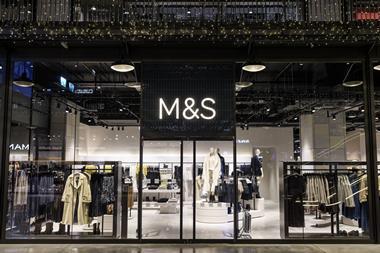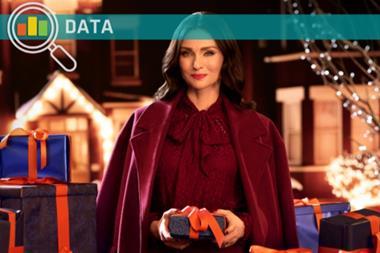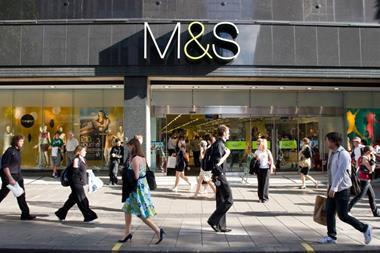Building longevity into a brand and staying one step ahead of both demanding consumers and the competition is a constant challenge. Rebecca Thomson asks how retailers can make sure they’re still relevant and still here in years to come

Keeping a strong brand
Look at it holistically
Get an overview of the entire brand by examining the space it operates within and how it relates to the target market. You need to develop its identity and tone of voice, where products are positioned in the market, the tone of the marketing communication, and the look and feel of the website and store.
Team collaboration
Work with the buying team and the marketing team to make sure that all parts of the company are aligned to the agreed strategy, especially the product.
Maintenance
Brand managers need to make sure that the brand’s evolution is consistent with the original vision. It needs to move forward, and stay fresh and consistent at the same time. This balance is critical to the ongoing success of the brand. It can help to use external agencies to make sure your analysis of how things are going is honest and robust.
Keeping a brand relevant year after year is like walking a tightrope. On one side, you have your loyal customers who like things the way they are and must be kept happy; on the other, the ever-present pressure to keep up with the latest trends and technology, and make sure you don’t become obsolete and get left behind.
Getting the balance right is no mean feat. Even iconic brands can fail if they lose a grip on what makes them different, as was shown earlier this year when Terence Conran’s brainchild Habitat was sold by its owners Hilco in June. But as Karen Millen managing director Gemma Metheringham explains: “That’s the challenge of being a brand. It’s about how you keep your style, keep what people love about you, but move things along at the same time.”
More than 40 years after Habitat’s first store was opened on Fulham Road, part of the UK business entered administration in June, while Argos-owner Home Retail Group snapped up three flagship stores and the online business. It was a sad demise for a retailer that had once been hailed as a design trailblazer. Conran has been quoted as saying it felt “like a child dying”.
“Nine out of 10 brands get it wrong because they don’t anticipate consumer changes”
Tom Savigar, The Future Laboratory
It’s this personal investment in the Habitat brand that marketers say was missing in its later years, and which they say is an integral part of the success of any brand. After Conran resigned as chairman in 1990, the retailer quickly lost some of its drive. “The original ethos Conran gave it meant the company had a very strong personality. Over the past few years, a lot of that got lost and it found itself in a very compromised position,” says Dave Edgar, founder of branding consultancy Bureaux Design. “I got the impression that there were very few people managing that process that really had an affiliation with the original DNA of what Habitat stood for.”
There are others, though, who have pulled a nosediving reputation and sliding sales back from the brink. French Connection had a couple of difficult years after its FCUK joke was told one too many times, but it has managed to inject a more serious element to its image and is successfully wooing shoppers once more. And Burberry skilfully distanced itself from the ‘chavs’ who adopted its check print in the early 2000s, by reducing the visibility of the check on its products and removing some items – such as a check baseball hat – from sale. It also cracked down on counterfeit products, increased control over where its products were sold, and hired a raft of inspiring, good-looking and talented young actors and musicians to appear in its adverts.
Staying ahead of the game
But steering a ship into calmer waters is not easy, so what steps can retailers take to make sure they stay one step ahead of shoppers?
The answer differs by sector and even by company. Metheringham says it helps that Karen Millen has its head office in trendsetting Shoreditch, London, so its designers can stay on the cusp of changing trends.
In the electricals world, Dixons has undergone a major brand transformation under John Browett. For this brand, staying ahead of shoppers requires a focus on customer feedback, with satisfaction surveys carried out as people leave the store. Niall O’Keefe, development director of Dixons’ service desk initiative ‘Know How’, says its commercial teams are also constantly looking at the trends coming out of South Korea and Silicon Valley. “We do want to understand what’s coming from the manufacturers, but it’s more important to keep the customer in mind.”
“You need to make sure customers continue to desire the brand”
Belinda Earl, Jaeger
Focus groups, customer surveys, social media and close communication with store staff all help retailers stay on top of what customers think. But it’s not just about listening to feedback – it’s about anticipating shoppers’ future desires and ensuring your products remain part of them.
Jaeger chief executive Belinda Earl says: “You need to make sure customers continue to desire the brand and find new ways of appealing to people.” Branding consultants can play a role in helping retailers do this, but ultimately, says Metheringham, it’s something retailers need to develop in-house. “We do use some consultants, but it’s incredibly important that we do quite a lot of it ourselves. You need your own perspective on the trends – you need to be aware of them, but also translate them so they have your own handwriting and style.”
This often means developing and expanding your range. Over 30 years Karen Millen’s range has extended beyond its clothing line to include accessories and jeans, while a core part of Dixons’ revamp was to expand its range to include more products across different price points. Jaeger, meanwhile, has launched Jaeger London and Boutique by Jaeger for younger shoppers in the past few years. “It was really on the back of customer feedback,” says Earl. “Customers wanted something a little more accessible.”
Much of this development relies on design teams, which must consistently keep challenging themselves, but it always helps to bring in fresh ideas. Metheringham mentors young fashion graduates, and says they’re a helpful bunch to have around. “It’s interesting to have new energy. Having new people around with new ideas brings something fresh.” But while it helps to have a stream of new ideas, what’s most important is having that clear idea of why the business exists in the first place. “Karen Millen has a very clear proposition. I love our focus on offering aspirational luxury that is also accessible. You need to be very clear on what you’re trying to do.”
Future gazing
Keeping a strong hold on your own values is imperative. But so is keeping a sharp eye on social, cultural and economic trends, says Tom Savigar, strategy and innovation director at trend forecasting consultancy The Future Laboratory, which works with retailers including Marks & Spencer, Selfridges and Burberry. “Nine out of 10 brands get it wrong because they don’t anticipate consumer changes,” he says. Staying up to date with developments is relatively straightforward, but it’s having a clear vision of what your brand is and what you want it to be that will help it find its place. “Burberry, for instance, has decided it wants to be a thought leader in digital, and it’s doing that,” Savigar explains. “John Lewis and Waitrose have a very strong ethos and mantra that seems to work.”
In many cases this vision comes from one person, whose personality becomes entwined with the business and who drives its success. Whether it’s Conran and Habitat or Anita Roddick and The Body Shop, once that central personality is gone, there’s always the risk of that magic ebbing slowly away from a company. Savigar says it will be interesting to see what happens at Apple now Steve Jobs has left, and says retailers are increasingly keen to make sure businesses stay in the hands of those who understand them. ”
“It’s about how you keep your style, keep what people love about you”
Gemma Metheringham, Karen Millen
Of course, it’s possible to do a successful handover, and companies have thrived under different people. The key is finding successors that share your values. Conran is trying to avoid the problems Habitat had with his other brand, the Conran Shop, and is in the middle of recording exactly what the reputation of the company is – that statement will be around when he is no longer running the company, and the process will help cement the right ideas in employees’ minds.
But Savigar says a handover process like this is no mean feat, and preserving values takes time. “It’s a process of brand sealing or of mind setting, and it could take five or 10 years for some. But it could definitely work.”
Running the nuts and bolts of a business from one year to the next can start to seem easy when it’s compared to the complicated nuances involved in making sure a brand stays successful. But Savigar says it doesn’t have to be as difficult as it sounds – he compares the process to keeping a relationship on an even keel. “You have to actually listen to customers, understand what their thoughts are and what they’re feeling.” A combination of intuition, customer engagement and careful observation will help most retailers discover their personality, he says, and it’s then down to them to implement it and communicate it throughout the company.
In a world where technologies develop at breakneck speed and consumers are increasingly capricious, having a strong sense of its own personality can help a business no end. And it’s those who have this who will have the best defence against sudden judders in shopping trends, economic uncertainty and cultural shifts.
Conviviality Culture: The Trend to Watch
Tom Savigar, strategy and innovation director at trend forecasting consultancy The Future Laboratory, says the past few years of discontent have given rise to a trend he calls “conviviality culture”.
“It’s a direct reaction to the last turbulent decade,” he explains, “and it involves people coming together and interacting more.” Consumers increasingly want face-to-face service and interaction, and more intimacy.
John Lewis, with its focus on service, has already benefited from this. Other retailers have been quick to react – Dixons has put the customer at the centre of things, and specialist retailers such as Majestic Wine Warehouse have used local stores and in-depth product knowledge to good effect.
DIY retailer Wickes agrees that developing a closer relationship with the customer is important. “When you’re a specialist retailer you do need that up your sleeve, and you need to be able to back up your products with knowledge about what they do,” says brand director Tony Holdway. He adds that it’s also necessary to know when to take a step back. If customers know exactly what they want and don’t need help, they don’t want to be harassed by staff. “You need to understand where the customer sits on that chart.”


























1 Reader's comment